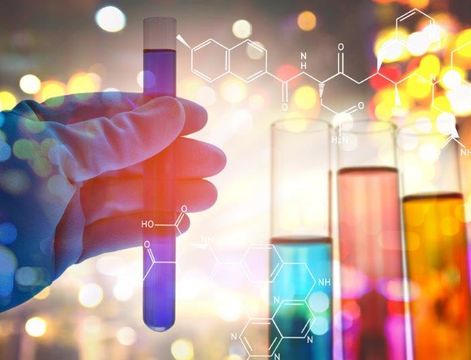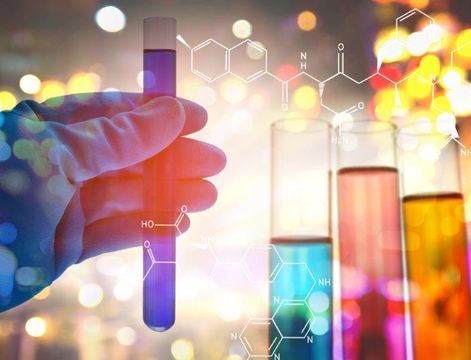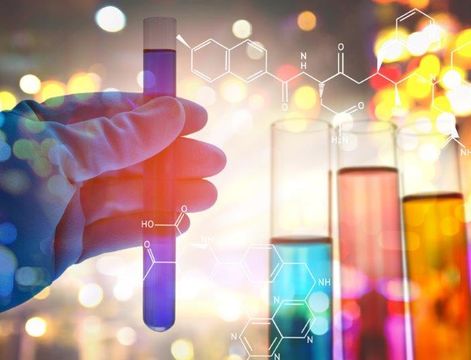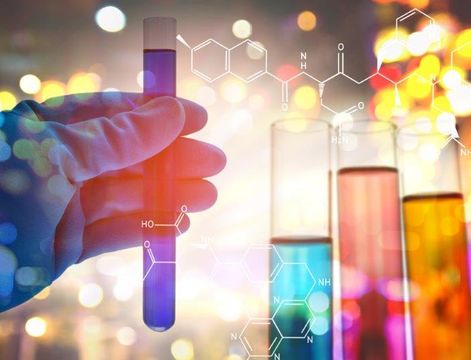
Final Newsletter No. 13 launched
Get informed about the closure of the project extension.
The promotion of innovation in chemical related areas is an important objective of the partner regions, which have highlighted these topics in their RIS as basis for ERDF innovation funding from 2014 until 2020. Chemical innovations are important for many downstream industries and help to find solutions for societal challenges in areas such as new materials, energy, alternative feedstock, etc.
The project wants to improve the implementation of RIS with focus on chemical related topics with the help of interregional exchange of experiences and mutual learning between public authorities from seven European chemical regions. Chemical companies and relevant research institutions should be supported to better access ERDF innovation funding. The governance of the RIS in the chemical related innovation areas should be improved in close cooperation with triple helix clusters and networks. The partners will change the strategic focus of their policy instruments based on good experiences from the whole partnership.
The main beneficiaries of the project will be responsible public authorities (e.g. ministries of economy) that will improve policy instruments for innovation funding in chemical related sectors, based on the good experiences from European partners. Furthermore companies and research entities working in these areas will also benefit from better regional funding for promotion of R&D and Innovation.
The main outputs of the project's first phase are: 12 Interregional working group meetings, 8 site visits, 6 peer review workshops, 40 regional innovation stakeholder meetings, 5 thematic studies focussing on RIS development, stakeholder involvement, project generation, financing instruments and monitoring. Finally, 7 action plans have been developed to describe concrete improvements of policy instruments. Their implementation will be monitored in the final 2 years of the project duration.
€2,275,156.00
Research and innovation
The interregional learning process was organised at different levels. The main place where the individual learning took place is the Interregional Working Group (IWG). The IWG met twice a half year to discuss their experiences in order to identify good practices as basis for mutual learning between partners. The participants of the IWG transfered the acquired knowledge to relevant colleagues in their ministries in order to ensure the organisational learning via internal working groups.
Furthermore each partner region also established a regional Innovation stakeholder group (RISG), which brings together relevant companies, research institutes and other business and innovation promotion stakeholders. The RISG met each half year to discuss the project topics and integrate their experiences into the interregional learning process.
Moreover the project has defined six thematic priorities for the interregional exchange of experiences. The thematic priorities reflect the different dimensions of the implementation process of the RIS related to chemicals, where improvements should take place. Different stakeholder groups had an active role in the discussion of the thematic topics. Each partner region organised RISG meetings and peer review workshops to discuss the topics with regional stakeholders and to integrate their contributions. The close collaboration between public authorities and Stakeholders was used for practical orientation of the action plan and to ensure support for future improvements.
The RIS defines innovation priorities for the period 2014-2020 in Saxony-Anhalt as basis for the spending of ERDF funds following the smart specialisation strategy approach. The Lead Market Chemistry and Bioeconomy is one of six innovation priorities, which is focused on the most important industrial sector in Saxony-Anhalt (7.2 billion Euro turnover and 20.000 employees). The industry has a high level of competitiveness and strong export orientation but is facing strong global competition. A few large multinational companies produce in Saxony-Anhalt but have no research activities in the region. The largest share of companies is small and medium sized, which require a special support for innovation. Therefore the improvement of RIS is crucial for strengthening innovation capacity and competitiveness of chemical companies and the region.
Five funding measures related to RIS have been defined in the framework of the ERDF programme: 1. R&D Single and Cooperative Projects, 2. Knowledge and Technology Transfer, 3. Improvement of Industrial Innovation Infrastructure, 4. Risk Capital Fund and 5. Network and Cluster Support. The definition of innovation priorities in the framework of the RIS as basis for innovation funding from ERDF is a new approach. It requires joint efforts of involved stakeholders in a bottom up process to efficiently use the public funding, which has been sharply reduced in comparison to last financial period.
RIS Mazovia constitutes, apart from Development Strategy for Mazovia, a key strategic document in the innovation sector. It is a document defining the regional innovation system support and the regional smart specialisation areas. The objectives for RIS Mazovia were defined : Increased innovation potential, leading to accelerated growth and increased competitivness of Mazovia as main goal and 5 strategic objectives (1) Increased and strengthened cooperation in innovation and innovativeness development ; (2) Increased internationalisation aiming at innovativeness of the region; (3) Increased efficiency of support and financial support to pro-innovative initiatives in the region; (4) Developing and promoting pro-innovative and pro-entrepreneurial attitudes fostering cooperation and creativity; (5) Strengthening of the information society as the key driver of innovation. RIS Mazovia has also defined 4 regional smart specialization areas: Safe Food, High Quality of Life, Intelligent Management Systems, Professional Services for Business. Smart specializations are the cross sectoral, multidisciplinary areas based on the links between the dominant sectors of the regional economy and key technologies. Chemistry is one of the most significant economic sectors but it is not sufficiently represented in the activities within the smart specialization areas. The measures, included in RIS Mazovia, concerned cooperation of chemistry representatives need to be improved.
The mission of RIS3 Zuid is to further develop the region of South Netherlands into a top innovative economic region of world stature. The Chemistry & Materials Cluster is one of 6 identified clusters with high growth potential. Within South Netherlands, the hotspot of the Chemistry & Materials Cluster is formed by Chemelot Campus and the adjacent Chemelot Industrial Park in the Province of Limburg.
Chemelot Campus is one of the largest Chemistry & Materials Sciences communities in Europe, where education, universities, and knowledge institutes are combined with industrial partners.
Some features of Chemelot Campus:
• Located in the center of a strong international knowledge network
• Attracting, retaining, and developing top talents and winners from all over the world
• Expanding R&D ecosystem, with focus areas: performance materials – bio-based – biomedical
• Unique R&D infrastructure, with shared facilities and pilot & mini-plant facilities
A good organized implementation of the strategy for the Chemistry & Materials Cluster will be crucial for its success. The policy mix will be based on the following five domains: People, Technology, Business, Basics and Governance. Relevant stakeholders have already taken the first step by drafting an Innovation Program Performance Materials South Netherlands that forms the basis for actual implementation projects.
Regione Lombardia (RL) has defined its own Smart Specializations Strategy – RIS3 (last update April 2015) focused on 7 specialisation areas. One of the specialisation areas is eco-industry which includes green chemistry. Lombardy is the largest Italian chemical region with 90.000 employees and 33 billion Euro turnover. More than 40.000 companies are active in the different value chains of the bioeconomy.
Within the RIS3 RL has promoted regional technology clusters as intermediate governance bodies and as a tool for the implementation of the strategy itself, for a better characterization of the specialization areas, for the mapping of the competences and for the definition of the technological development trajectories. The Regional Technology Cluster on Green Chemistry covers Sustainable Chemistry and the Bioeconomy. The cluster is expected to involve all active regional stakeholders from industry and research, support the Region in the design and implementation of the Regional Innovation Strategy with focus on Green Chemistry and Bioeconomy setting up a Thematic community within the Open Innovation Platform of Regione Lombardia.
Regione Lombardia recognizes the paramount role of open innovation as a main driver to accomplish its strategic goals: promoting an open, collaborative attitude among its SMEs is one of the pillars of the new ERDF programme, with an allocated budget of 10M€ for support actions covering period 2014/2020.
The Regional Innovation Strategy (Asturias RIS3) defines the innovation priorities for the period 2014-2020 as basis for the spending of ERDF funds following the smart specialisation strategy approach. Advanced and Sustainable Materials is one of six fields in which innovation priorities are clustered
Our regional chemical and chemical process companies, a critical industrial activity of our region (materials sector accounts 776 companies, 6,4 billion Euro turnover and 23.000 employees), are directly involved with the scope of this field. The industry has a high level of competitiveness and strong export orientation (68% of total export), but is facing strong global competition. Important multinational companies produce in Asturias, some of them have research activities in the region. Moreover within this sector there is a significant group of companies of medium-big size with strong territorial connections.
Asturias ERDF programme defines funding schemes to implement Asturias RIS3, among them: R&D and innovation grants for companies (single or collaborative projects), Grants helping firms to recruit researchers, Grants to Technology transfer, Grants for scientific and technological start-ups and Grants for Technological Centres and University Research Groups.
Addressing ERDF to regional innovation priorities needs a big work of designing tailor-made instruments and to keep a continuous dialogue with stakeholders with an international perspective.
The Catalonia 2020 Strategy (ECAT 2020) aligned with the Europe 2020 Strategy, has defined the Research and Innovation Strategy for the Smart Specialization of Catalonia (RIS3CAT), which has identified 7 sectors to lead an economic transformation towards the 2020 targets: Food Industries, Chemical, Energy and Resources Industries, Industrial Systems, Design Industries, Sustainable Mobility Industries, Health and Life Sciences Industries and Cultural and Experience-based Industries, focusing on the 6 cross-cutting enabling technologies: ICT, Nanotechnology, Advanced materials, Photonics, Biotechnology and Advanced manufacturing. To deploy the RIS3CAT, the Government has just launched the Industrial Policy 2014-2020, aiming at strengthening the industrial sector under a sectorial approach, In particular, a Programme for the Chemical, Energy and Resources Industries (PIQER) has been created targeting 400 companies with a turnover of 15.580 M €. On the other hand, two main RIS3CAT RDI instruments are foreseen at the axis 1 of the ERDF OP in Catalonia 2014-2020:1. RIS3CAT Communities: Volunteer PPPs to boost economic transformation plans through the RDI in the 7 sectors. It is foreseen to create 2 RIS3CAT Communities in the chemical sector. 2. Industrial R+D projects: In order to promote the development of KETs which are feasible at the industry and also able to boost distinguishing skills for industry. It is foreseen to grant 5 projects in the chemical sector.
The heart of Walloon smart specialization strategy 2014-2020 is made by clustering policies, designed to stimulate the development of niches in regional specialization areas based on collaborative and dynamic innovation. Wallonia is working on horizontal approaches to stimulate research and innovation, creativity and entrepreneurship in the Walloon economy. The chemical sector is a key industrial activity: being export leader (40% of total exports). In addition, the chemical industry and life sciences is the first Walloon private investor in R&D with nearly 60% of total expenditure.
In the OP ERDF the Axis 2 defines innovation funding: INNOVATION 2020: Increase regional innovation through increased collaboration between public research organizations, universities and innovative companies. (Measure 2.2.) The objective is to strengthen research, technological development and innovation by promoting business investment in R&D and by developing links and synergies between stakeholders: companies, research and development centers, higher education sector and competitiveness clusters. The Walloon regional policy statement has clearly identified innovation as a cornerstone of industrial development in the Region. R&D support will focus on innovation and marketing, non-technological innovation, eco-innovation and Key Enabling technologies (KET). Due to its importance, chemical companies and related research institutes will be an important stakeholder for innovation funding.

Get informed about the closure of the project extension.
The S3Chem Joint Analysis is available.

Get informed about the final Project Extension Conference in Tarragona

Get informed about the S3Chem project extension

Saxony-Anhalt finishes Pilot Action

Get informed about the Final Dissemination Conference in Maastricht

Get informed about the latest project meeting in Magdeburg

Get informed about the achievements of the first project phase of the S3Chem project

Over the past three years, S3Chem partners collected 15 good practices in their regions with valuable transfer potential.

Seven regional action plans have been developed to improve the Regional Innovation Strategies with focus on chemical related topics